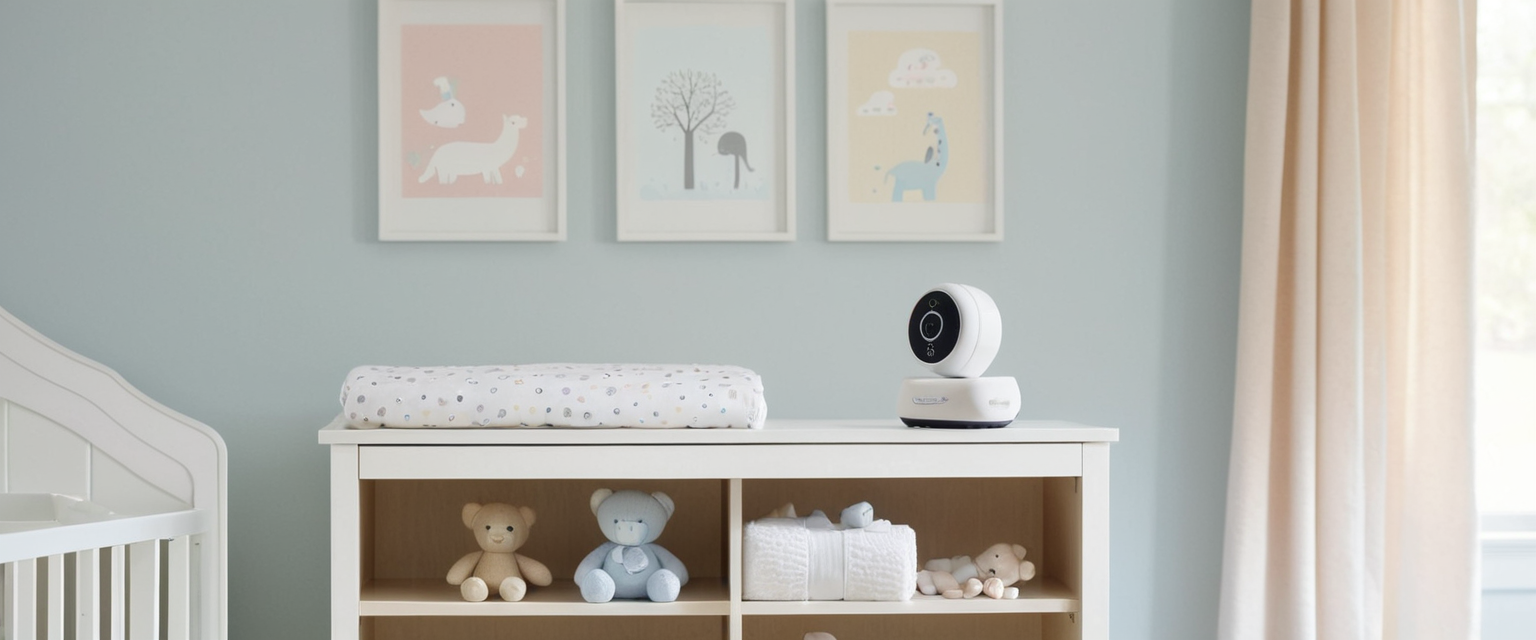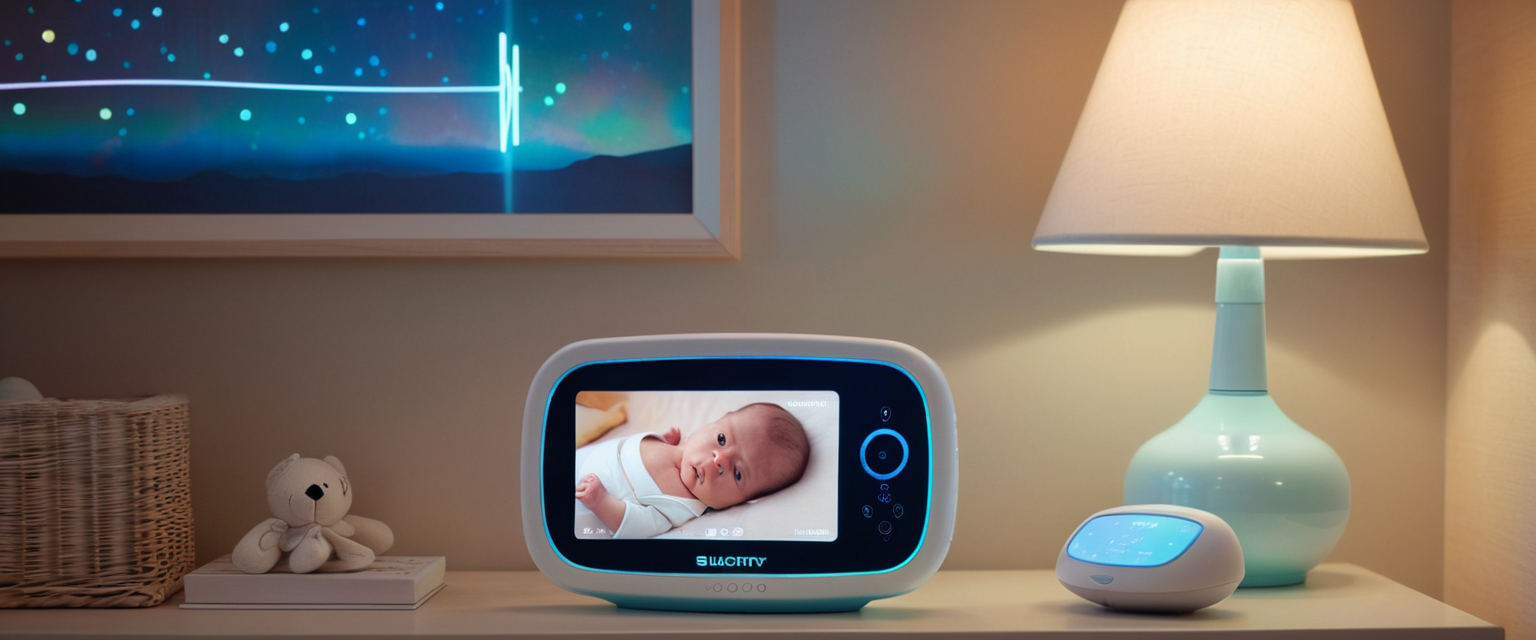
This comprehensive report examines the critical intersection of convenience and security in modern baby monitoring systems, with particular emphasis on protecting children’s privacy through proper camera and microphone safeguards. Recent research reveals a deeply concerning landscape where over 40,000 publicly accessible “private” cameras stream live footage from nurseries, offices, hospitals, and sensitive locations worldwide, most without the knowledge or consent of their owners. The proliferation of internet-connected baby monitors has created unprecedented privacy risks for vulnerable populations, with cybercriminals exploiting poorly configured devices, default credentials, and inadequate encryption to gain unauthorized access to intimate moments of family life. This analysis synthesizes current research, real-world case studies, and security best practices to provide a thorough understanding of nursery privacy fundamentals and practical strategies for defending against camera and microphone-based intrusions in domestic monitoring environments.
The Global Landscape of Baby Monitor Vulnerabilities and Exposure
The scale and severity of baby monitor security failures represent one of the most alarming categories of internet-connected device vulnerabilities affecting families worldwide. In June 2025, cybersecurity firm Bitsight released a groundbreaking report revealing that over 40,000 “private” cameras were operating with public access, streaming live footage from homes, offices, hospitals, and even automated teller machines without encryption or password protection. This discovery fundamentally challenges the assumption that baby monitors provide secure, private monitoring within the domestic sphere. The United States emerged as the country with the highest concentration of exposed devices, with nearly 14,000 compromised cameras, followed by Japan with approximately 7,000 exposed devices and significant vulnerabilities identified in Austria, South Korea, and Germany. The researchers at Bitsight did not employ sophisticated hacking techniques or brute-force password attacks to identify these cameras; rather, they utilized basic scanning tools that detected devices operating over HTTP and RTSP (Real-Time Streaming Protocol), discovering that most could be accessed using simple URL guessing and default credentials.
The sheer volume of exposed devices reflects a systemic failure in security implementation across the consumer Internet of Things ecosystem. What makes this vulnerability particularly troubling is that these exposed cameras stream from environments where families have explicit expectations of privacy and confidentiality. The researchers documented exposed feeds from residential spaces, commercial offices, retail establishments, manufacturing facilities, hospitals with patient monitoring equipment, and critical infrastructure including transportation systems and automated financial machines. In retail environments, thieves could monitor cash registers and business closing times, enabling burglaries timed for maximum opportunity. Factory operations exposing production lines create intellectual property theft risks where competitors could observe proprietary manufacturing processes and trade secrets. Most disturbingly, the presence of exposed cameras in healthcare settings, particularly those monitoring patients in hospitals and medical facilities, represents a fundamental violation of patient privacy and potentially violates regulations such as HIPAA in the United States. Even more alarming was the discovery of ATM cameras potentially exposing PIN entry patterns, where “fraudsters could steal PINs remotely,” effectively turning the ATM’s own surveillance equipment into a tool for criminal activity.
Understanding Baby Monitor Technology: Architecture, Types, and Security Mechanisms
The market for baby monitoring devices encompasses multiple technological approaches, each with distinct security profiles and privacy implications. Understanding these different architectures is essential for parents making informed decisions about which systems offer adequate protection for their family’s privacy. Baby monitors generally fall into three categories: analog/radio frequency devices, digital non-Wi-Fi monitors, and internet-enabled Wi-Fi connected systems. Each category represents different trade-offs between functionality, accessibility, and security vulnerability.
Analog and Radio Frequency Monitors
Traditional analog baby monitors represent the oldest monitoring technology, using radio frequency signals to transmit audio from the nursery to a parent unit. These devices operate similarly to citizen band radios or walkie-talkies, broadcasting on specific frequencies within a limited range, typically constrained to a few hundred feet depending on environmental factors and antenna design. The security profile of analog monitors is characterized by low-tech accessibility requirements on one hand but limited remote capability on the other. Someone seeking to intercept an analog monitor’s signal must be physically proximate to the broadcast location, requiring them to be “hiding in your bushes close” to successfully hijack the transmission. This proximity requirement creates a natural deterrent for many potential attackers, as it requires physical presence near the family’s home and increased risk of detection. Additionally, most leading analog monitor products employ encrypted communications, providing further protection against casual eavesdropping.
However, analog monitors possess inherent vulnerabilities. Within range of the signal, anyone with knowledge of the frequency could theoretically intercept broadcasts by tuning a receiver to that frequency. The technology does not inherently prevent others in the vicinity from receiving the transmission, particularly if they happen to be using devices operating on the same frequency. The skill barrier to intercepting these signals has diminished with modern software-defined radio equipment, making it possible for technically sophisticated actors to intercept analog transmissions using relatively inexpensive hardware and open-source software.
Digital Non-Wi-Fi Monitors Using FHSS and DECT Technology
Digital non-Wi-Fi monitors represent a significant advancement over analog systems, employing encryption and frequency management techniques to prevent unauthorized access. Two primary technologies dominate this category: Frequency Hopping Spread Spectrum (FHSS) and Digital Enhanced Cordless Telecommunications (DECT).
Frequency Hopping Spread Spectrum technology operates by continuously changing the carrier frequency among multiple frequencies within a designated band in a predetermined sequence known only to the paired transmitter and receiver. The FHSS transmitter and receiver must be synchronized to maintain communication, hopping between available narrowband frequencies in a pseudo-random pattern. This hopping mechanism provides four significant advantages over fixed-frequency transmission: first, FHSS signals exhibit high resistance to narrowband interference because the signal continuously moves to different frequency bands; second, signals are difficult to intercept without knowledge of the frequency-hopping pattern; third, jamming attempts face similar challenges if the attacker lacks knowledge of the channel or hopping algorithm; and fourth, FHSS transmissions can share frequency bands with conventional transmissions with minimal mutual interference. Interestingly, FHSS technology was patented in 1942 by actress Hedy Lamarr and composer George Antheil, and originally featured the capacity to switch between 88 sub-frequencies in early applications during World War II. The 2.4GHz FHSS baby monitors subdivide the 2.4GHz frequency band into sub-frequencies from which the signal rapidly hops as transmitted from the baby monitor unit to the receiver/parent unit, making it extremely difficult for someone to casually encounter and listen to the baby monitor’s signal.
Digital Enhanced Cordless Telecommunications, commonly known as DECT, operates on a fundamentally different principle than FHSS, using an uncommon frequency band (1.9 GHz) and digitally enhanced cordless telecommunications technology. The DECT protocol provides excellent sound quality without interference from other wireless networks, as it can switch channels on its own and select from over 50 available channels to provide secure transmission. The DECT standard includes encryption services through the DECT Standard Cipher (DSC), though this encryption employs relatively weak cryptography featuring a 35-bit initialization vector and 64-bit encryption. This technical limitation has proven consequential, as security researchers have demonstrated that the original DSC encryption has been successfully broken, and free software tools now allow real-time decryption of DECT communications. Despite this vulnerability in the original DECT encryption, most leading DECT baby monitor products remain virtually hack-proof in practice because accessing the signal requires physical proximity to the transmission location.
Wi-Fi Enabled Internet-Connected Baby Monitors
Internet-enabled baby monitors represent the frontier of family monitoring technology, offering unprecedented remote access capabilities at the cost of substantially increased security complexity and vulnerability potential. These devices connect to a family’s home wireless network and typically stream video and audio to smartphone applications that parents can access from anywhere with an internet connection. The convenience factor is undeniable; approximately 30 to 40 percent of monitors added to Babylist registries are Wi-Fi monitors, reflecting widespread parental desire for remote monitoring capabilities.
However, Wi-Fi monitors introduce dramatically expanded attack surfaces compared to their non-connected predecessors. These devices must authenticate with the home router, potentially negotiate encryption protocols, maintain internet connectivity, and typically communicate with cloud servers managed by the monitor manufacturer. Each of these connection points represents a potential vulnerability. Hackers can attack a Wi-Fi baby monitor through multiple vectors: they can attempt to compromise the home router itself through password guessing or exploitation of firmware vulnerabilities; they can target the specific baby monitor device through default credentials or exploitation of firmware bugs; they can attempt credential stuffing, using previously compromised username and password combinations from data breaches on other services; or they can compromise the manufacturer’s cloud infrastructure to gain master access to all customers’ monitoring feeds. A security researcher named SydeFX demonstrated the ease of this attack by locating 300 vulnerable Nest cameras in under 10 minutes using credential stuffing techniques with previously exposed username and password combinations.
Attack Vectors and Exploitation Methods: How Hackers Access Baby Monitors
Understanding the specific mechanisms through which attackers exploit baby monitors is essential for implementing effective defenses. The vulnerabilities that enable unauthorized access are often depressingly simple, relying on fundamental security oversights rather than sophisticated zero-day exploits.
Default Credentials and Password Failures
The most prevalent vulnerability exploited by attackers is the failure of users to change default login credentials provided by manufacturers. Manufacturers typically ship baby monitors with standard username and password combinations, well-documented in user manuals, online forums, and technical documentation. Any attacker with an internet connection can easily discover these default credentials by searching for model numbers combined with terms like “default password.” Even worse, many users remain unaware that these default credentials exist or that changing them is necessary for security. An attacker targeting a specific baby monitor model can scan networks for devices on the standard ports, identify cameras from particular manufacturers based on response patterns, and attempt login using known default credentials.
This vulnerability is compounded by the inadequacy of many manufacturer implementations. Some cameras allow users to reset passwords and change administrative access only after initially logging in with the default credentials, but fail to enforce this as a mandatory first-time setup requirement. Parents purchasing a monitor may simply connect it to their Wi-Fi network without ever creating custom credentials, leaving the device fully accessible to any attacker who knows the default username and password.
Weak Encryption and Protocol Vulnerabilities
Many baby monitors employ outdated or insufficiently implemented encryption protocols. The FTC’s 2013 settlement with TRENDnet revealed a particularly egregious case where the company transmitted user login credentials in clear, readable text over the internet despite free software existing to secure such transmissions. Additionally, TRENDnet’s mobile applications stored consumers’ login information in clear, readable text on their mobile devices, making credentials trivially accessible to anyone gaining physical access to a parent’s phone. This failure represented not a sophisticated technical gap but rather a fundamental misunderstanding of security principles.
More recent vulnerabilities in devices like the Nooie Baby Monitor demonstrated buffer overflow vulnerabilities that allowed attackers to execute arbitrary code on the devices themselves. Researchers identified that the camera used MQTT protocol to announce its status and receive URL locations for streaming feeds, but the MQTT server did not require authentication. By connecting to this unauthenticated server, attackers could redirect any camera’s feed to an attacker-controlled server, viewing live feeds at will. The vulnerability was exacerbated by a stack-based buffer overflow in the URL processing function that allowed remote code execution, potentially enabling attackers to completely compromise the device and use it as a platform for further network attacks.
Network-Level Compromise
Attackers often exploit vulnerabilities at the network level rather than targeting individual devices. If an attacker can compromise a home’s Wi-Fi router through password guessing or exploitation of firmware vulnerabilities, they gain access to all Wi-Fi connected devices on that network, including baby monitors. Many home users employ weak router passwords or fail to update router firmware with security patches, leaving the entire home network vulnerable. Once an attacker penetrates the router’s administrative interface, they can monitor all network traffic, intercept credentials transmitted over unencrypted connections, or perform man-in-the-middle attacks that intercept communications between baby monitors and cloud services.
Cloud Service Compromise
Sophisticated attackers may target the manufacturer’s cloud infrastructure rather than individual home networks or devices. In 2019, a hacker breach of Verkada, a major cloud security camera company, compromised approximately 150,000 customer camera feeds, allowing attackers real-time access to livestreams across enterprise and residential installations. Similarly, a 2014 incident revealed a Russian website broadcasting live footage from homes and businesses worldwide, accessed solely through smart devices secured only with default passwords. These large-scale breaches demonstrate that even users who properly secure their home networks and devices remain vulnerable if the manufacturer’s cloud infrastructure lacks adequate security.

Documented Incidents: Real-World Cases of Baby Monitor Compromise
The theoretical risks posed by baby monitor vulnerabilities have unfortunately manifested in numerous documented incidents affecting real families, creating psychological trauma and raising awareness of the dangers.
A particularly disturbing case involved a family in Arkansas whose baby monitor was hacked while they believed they had taken appropriate security precautions. The family had changed their password from the default, but despite this effort, a stranger successfully hacked into their home through the baby monitor. The incident began when the monitor started moving without parental input, focusing on the spot where the mother was breastfeeding her son. A more recent case involved a family in Searcy, Arkansas whose Wi-Fi baby monitor was infiltrated by an unknown attacker who communicated directly with their child through the monitor’s speaker system. The stranger began speaking to the child, who woke up around 10:30 PM each night—a pattern the parents initially attributed to normal infant wakefulness but later recognized as the attacker’s routine tampering. Upon investigation, the parents discovered that the problem originated in their Wi-Fi router, not the monitor itself, and found evidence of numerous unauthorized users previously signed into the device.
Another significant incident occurred in Seattle in 2019, when a hacker broadcast creepy messages to a child through a hacked baby monitor. In 2018, a South Carolina case revealed a hacker who had repositioned the camera to focus on locations where the mother would breastfeed, creating an explicit privacy violation. These incidents are not isolated anomalies but rather symptoms of systemic vulnerabilities affecting millions of monitors.
Federal law enforcement has become involved in investigating baby monitor hacking cases. The FBI investigated a case involving a family in Austin, Texas, where a home Wi-Fi baby monitor was hacked despite the family following standard security advice including changing the factory password. Initially, the camera began blinking, indicating unauthorized access, but then the monitor started moving independently, confirming active remote control by an attacker. The parents immediately disconnected the device and contacted authorities, who referred the matter to the FBI for investigation. FBI involvement in these cases underscores the seriousness with which law enforcement now views baby monitor security.
Beyond individual family cases, recent litigation demonstrates broader concerns about certain device manufacturers. In October 2025, Nebraska’s Attorney General filed a lawsuit against Lorex, a home security camera manufacturer whose products are sold at major retailers including Costco, Best Buy, and Kohl’s, alleging that the company misled consumers about the safety and privacy of baby monitors. The lawsuit claims that Lorex marketed its cameras as “private by design” while concealing that devices rely on technology from Zhejiang Dahua Technology Co., a Chinese surveillance firm legally bound to assist Beijing’s intelligence apparatus. The 39-page complaint alleges that by hiding the reliance on a CCP-controlled company, Lorex is effectively making cameras that say “Watching from China” instead of merely “Made in China.” This case highlights how privacy vulnerabilities extend beyond hacking risks to encompass concerns about data access by foreign governments.
Recognition and Detection: Identifying Compromised Baby Monitors
Parents need to recognize warning signs that suggest their baby monitor has been successfully compromised, as early detection can limit the scope of unauthorized access and violation.
Unusual noises or voices represent one of the most obvious indicators of compromise. If parents hear strange voices, music, or sounds through the monitor that cannot be attributed to household activities, it may indicate an attacker has gained audio access. In documented cases, parents heard unknown voices speaking to their babies or communicating over the monitor’s speaker system.
Protect Your Digital Life with Activate Security
Get 14 powerful security tools in one comprehensive suite. VPN, antivirus, password manager, dark web monitoring, and more.
Get Protected NowUnexplained camera movements present a clear warning sign, particularly for monitors with pan, tilt, and zoom capabilities. If the camera moves independently without parental input, this strongly suggests remote access by an unauthorized party. One family documented their monitor panning and tilting around the nursery and then focusing specifically on the area where the mother breastfed, indicating deliberate surveillance of intimate moments.
LED light activity anomalies can signal compromise. Parents should monitor LED indicators on their baby monitor devices, watching for abnormal blinking, unexpected activation, or patterns inconsistent with normal operation. Changes in security settings or credentials represent another critical warning sign. If parents notice that passwords have been changed, security settings have been modified, or they suddenly cannot access their own devices, this strongly indicates unauthorized access. Some compromised monitors show increased data usage patterns, as attackers actively view feeds or download recordings, consuming substantially more bandwidth than normal operation would require.
Unknown login alerts should trigger immediate investigation. Many monitor apps generate notifications when new logins occur, particularly from unfamiliar devices or IP addresses. Receiving login notifications at strange times or from unexpected geographic locations indicates unauthorized access attempts. Parents monitoring their system logs might discover unfamiliar IP addresses attempting to access their cameras or appearing in access logs at times when no family members were attempting access.
Securing Baby Monitors: Comprehensive Best Practices and Implementation Strategies
Defending baby monitor systems requires a multi-layered approach addressing device-level security, network-level protection, account security, and ongoing monitoring practices. No single security measure provides complete protection, but comprehensive implementation of multiple strategies substantially reduces vulnerability.
Choosing Monitor Technology: Wi-Fi Versus Non-Wi-Fi Considerations
The most fundamental decision parents face is whether to accept the convenience of Wi-Fi enabled remote monitoring or prioritize the enhanced security of non-Wi-Fi systems. Security experts consistently advise that non-Wi-Fi baby monitors represent the more secure choice for families capable of accepting their limitations. As Cooper Quintin, a cybersecurity researcher at the Electronic Frontier Foundation, has advised: “My advice to new parents would be, definitely don’t get something that connects to the internet.” A privacy-minded parent prioritizing the prevention of unauthorized access to images of their child should consider non-Wi-Fi systems unless remote access serves a compelling necessity.
For parents determined to use Wi-Fi monitors, certain critical features become non-negotiable. Two-factor authentication represents the single most important security feature to look for in Wi-Fi baby monitors. Two-factor authentication requires two different forms of identification to access an account, typically a password plus a code texted to a phone or generated by an authenticator application. As security experts have noted, the presence of two-factor authentication indicates whether a manufacturer prioritizes security, with its absence serving as “a reason not to use that particular baby monitor brand.”
Password Security and Default Credential Management
Parents must immediately change any default login credentials provided by the manufacturer before connecting their monitor to their home network. This change should occur during initial setup, before the device ever connects to the internet. The new password should be strong and unique, containing at least 16 randomized characters or consisting of a string of unrelated words, and it should never be shared across other devices or accounts.
Parents should create completely unique passwords for their baby monitor rather than reusing passwords from other services or email accounts. Given that credential stuffing attacks leverage previously breached username and password combinations from unrelated services, reusing passwords creates a pathway for attackers to access the monitor if any other account is compromised. Additionally, parents should never use personally identifiable information as passwords, avoiding variations on their child’s name, birth date, or family member names, as this information is often publicly available on social media or easily guessed by acquaintances.
Two-Factor Authentication Implementation
When enabled, two-factor authentication provides an additional layer of security by requiring verification through a secondary method beyond the password. For services using text message verification, parents receive a six-digit code that expires after a short time window, typically five minutes, and must be entered within that timeframe to complete login. Services should offer the option to add trusted devices, eliminating the need for two-factor authentication codes when logging in from recognized devices within a defined period, typically 30 days. Parents should carefully evaluate which devices to mark as trusted, ensuring that only devices they directly control are granted this privilege.
Firmware Updates and Patch Management
Manufacturers regularly release firmware updates addressing newly discovered security vulnerabilities. Parents must maintain current firmware on their baby monitors by regularly checking for available updates and installing them promptly. Many modern monitors offer automatic firmware update options, which parents should enable to ensure security patches are installed without requiring manual intervention.
Firmware updates are equally critical for wireless routers, as router vulnerabilities can compromise all Wi-Fi connected devices on the network. Parents should log into their router’s administrative interface regularly to check for available firmware updates and enable automatic updates when possible.
Network Security and Router Hardening
A baby monitor is only as secure as the network to which it connects. Parents should secure their wireless router with a strong, unique password completely different from any other passwords they use. The router should use modern encryption standards, ideally WPA3 if available, with WPA2 as a minimum acceptable standard, while completely avoiding outdated WEP encryption.
Parents should disable remote router access and disable port forwarding or UPnP unless absolutely necessary, as these features expand the attack surface available to remote attackers. Some parents find value in isolating their baby monitor and other Internet of Things devices on a separate guest network, creating a network segmentation that prevents attackers who compromise a smart home device from accessing the family’s primary network containing computers, smartphones, and other sensitive devices.
Disabling Unnecessary Features and Remote Access
Baby monitors often feature remote access capabilities enabling parents to view feeds from anywhere with an internet connection, but this convenience increases security risk. Parents should disable remote access when not actively using it and carefully evaluate whether the functionality is truly necessary. Some security professionals recommend disabling remote access entirely and only enabling it when specifically needed.
If remote access must remain enabled, parents should change the monitor’s default camera access port from its standard setting of port 80 to a non-standard port number above 8100, reducing the likelihood that attackers scanning networks for standard ports will discover the device. Parents should also regularly review monitor logs for suspicious activity, including login attempts from unusual IP addresses or access at times when no family members were actively monitoring.
Avoiding Cheap Products and Prioritizing Reputable Manufacturers
Security researchers consistently observe that cheaply manufactured Internet of Things products lack the resources for dedicated security teams and fail to patch vulnerabilities promptly. Parents investing in baby monitors should prioritize reputable manufacturers with established track records of security focus and timely vulnerability response rather than selecting the lowest-cost option. Monitor reviews should be examined for mentions of security practices, update frequency, and customer feedback regarding responsiveness to security concerns.

Professional Security Reviews and Consumer Labels
Parents should look for emerging consumer security labels as tools for identifying stronger options. In the United States, the Federal Communications Commission’s Cyber Trust Mark is being rolled out to help consumers spot products with stronger security practices. These initiatives aim to create marketplace signals that incentivize manufacturers to prioritize security rather than competing purely on price or feature quantity.
Legal Framework and Privacy Considerations
The legal landscape governing baby monitor use and privacy protections remains underdeveloped relative to the proliferation of monitoring technology. Parents should understand their rights and obligations regarding surveillance device use, particularly in homes with multiple inhabitants or guests.
Consent and Expectation of Privacy
Federal law distinguishes between video recording and audio recording, with different consent requirements for each. Generally, it is legal to record video in common areas of one’s own home, and video surveillance is specifically legal in public spaces. However, the legal principle of “reasonable expectation of privacy” limits surveillance in certain areas, particularly bathrooms, bedrooms, and changing rooms where individuals expect privacy. Parents should avoid placing baby monitors in bathrooms, diaper-changing stations, or areas where guests or household staff might have reasonable privacy expectations.
Audio recording faces more restrictive requirements than video recording. Federal law permits recording of in-person conversations with the consent of at least one party to the conversation, meaning parents can record audio in their own homes. However, some states have adopted all-party consent laws requiring that all parties to a recorded conversation consent to the recording, making it illegal to record conversations involving other people without their explicit consent. States with all-party consent laws include California, Delaware, Florida, Illinois, and Maryland, among others.
Childcare and Institutional Settings
Childcare facilities using baby monitors face different legal obligations than parents monitoring their own children. Facilities are subject to strict regulations regarding recording of children, with some regions requiring permission from parents and staff before installing cameras. Clear signage must inform parents, staff, and visitors of camera installation, and transparent privacy policies must detail how video footage will be used, stored, and who will have access. Childcare facilities should avoid placing cameras in sensitive areas such as bathrooms, diaper-changing stations, and staff break rooms.
When childcare facilities provide remote parent access to camera feeds, access should be carefully controlled so that parents only view areas where their specific children are present rather than allowing access to entire facility feeds. Video feeds should be encrypted and access should be password-protected with consideration for scheduled access times to ensure compliance with privacy standards.
Storage Considerations: Cloud Versus Local
Baby monitor systems employ different storage approaches for video recordings and historical data, each with distinct security and privacy implications. Understanding these options helps parents make informed decisions about where their family’s private moments are stored and who can potentially access them.
Cloud storage for baby monitor footage leverages servers maintained by the monitor manufacturer or a third-party service provider, offering remote accessibility and automatic backup but requiring trust in the cloud provider’s security practices. Cloud storage eliminates the need for parents to purchase and maintain physical storage hardware, allows access from anywhere with an internet connection, provides automatic backup reducing data loss risk from hardware failures, and typically includes robust encryption and access controls implemented by the service provider.
However, cloud storage introduces vulnerability to breaches of the cloud provider’s systems, reliance on stable internet connectivity for access, potential privacy concerns about third-party possession of intimate family footage, and recurring subscription costs that accumulate over time. Parents considering cloud storage should carefully evaluate the privacy policies and security practices of the cloud provider, ensuring the company complies with relevant privacy regulations and has not experienced previous security breaches.
Local storage involves recording video directly onto devices physically located in the family’s home, such as hard drives, Network Video Recorders, or Network Attached Storage devices. This approach provides complete parent control over data and security measures, eliminates dependence on internet connectivity for video access, avoids ongoing subscription fees after initial hardware investment, and keeps video data within the family’s physical premises.
Local storage disadvantages include higher upfront hardware costs, limited accessibility for remote viewing without additional infrastructure, scalability challenges as storage capacity fills requiring hardware upgrades, susceptibility to physical damage or theft resulting in data loss, and ongoing maintenance responsibilities including power management, updates, and hardware replacement. Local storage systems require parents to manage maintenance, ensure reliable power backup, maintain current firmware and software, and implement secure backup procedures to prevent total data loss from hardware failures.
Advanced Security Measures and Network Segmentation
Parents implementing comprehensive security programs should consider advanced measures including network segmentation, security monitoring, and firewall protection.
Network segmentation involves creating a separate Wi-Fi network exclusively for Internet of Things devices like baby monitors, physically isolated from the primary network containing computers, smartphones, and other sensitive devices. Most home routers support creating a guest network at no additional cost or equipment requirement; the guest network uses the same internet connection but is logically separated from the primary network. Even if an attacker successfully compromises a baby monitor on the isolated network, they cannot laterally move to the family’s primary devices since the networks do not interconnect.
Implementing this segmentation requires minimal technical knowledge. Parents should access their router’s administrative interface through a web browser or mobile application, create a new network with a unique name (not something like “Guest Network” that identifies it as non-secure), establish a strong password for the isolated network, and connect only Internet of Things devices like baby monitors to this separate network. Smart home devices, security cameras, and similar connected products should be isolated on this guest network, while computers, smartphones, and tablets remain on the primary network.
Security monitoring practices should include regular review of connected device lists on the home network to identify any unfamiliar devices that might indicate a compromised account or unauthorized access. Parents should document what devices should normally appear on their networks and investigate any unexpected additions. Reviewing login alerts and access logs provided by baby monitor applications can reveal unauthorized login attempts or access from unusual geographic locations or unfamiliar IP addresses.
Response to Suspected Compromise
If parents suspect their baby monitor has been hacked, immediate action is necessary to limit further unauthorized access and compromise.
Parents should immediately disconnect the compromised monitor from the network by disabling Wi-Fi connectivity or disconnecting power. This prevents the attacker from continuing to view live feeds or downloading additional recordings. Parents should reset the device to factory settings by locating the reset button, typically on the back or bottom of the camera unit, and holding it until the device reboots. This step erases any custom settings the attacker may have configured and removes any malware that might have been installed.
After resetting the device, parents must change their Wi-Fi network password immediately, as there is a strong possibility that the attacker obtained access to the primary network rather than just the baby monitor itself. This password change ensures that any credentials previously compromised cannot be used to access the network going forward. The new Wi-Fi password should be strong and completely different from the previous one.
Parents should thoroughly update all network components by installing the latest firmware updates on the router and any other connected devices that might have been compromised. This ensures that any known vulnerabilities have been patched and prevents the attacker from exploiting the same vulnerabilities to regain access.
Finally, parents should report the incident to relevant authorities, including local police and the FBI in the United States, particularly if the attacker engaged in voyeurism, threats, or other criminal behavior. Law enforcement can provide guidance on additional protective measures and may investigate the attack.
Specialized Applications and Emerging Technologies
Beyond traditional baby monitors, specialized applications and emerging technologies create additional camera and microphone privacy considerations in nursery environments.
Some new technologies provide innovative monitoring without traditional camera feeds. A groundbreaking 2025 device developed at Northwestern University measures breast milk consumption through a soft, wearable sensor that wraps around a nursing parent’s breast and wirelessly transmits data to a smartphone or tablet, displaying real-time milk intake without visual monitoring. This technology represents an alternative approach to traditional baby monitoring that eliminates video surveillance concerns while providing nutritional information previously difficult to obtain. Thermal sensor-based monitoring systems can estimate respiration rates without any contact with the infant’s skin, using temperature variations to assess breathing patterns through processors linked to a nursery room.
Childcare facilities increasingly implement live video streaming platforms, creating opportunities for real-time parent engagement while introducing security challenges requiring careful management. Platforms like Illumine’s Live CCTV Streaming allow parents limited, secure access to live feeds of their specific children during care hours, but require implementation of authentication, encryption, scheduled access windows, and careful access control to ensure privacy compliance.
The regulatory environment is evolving to address security vulnerabilities in connected devices. ISO/IEC 27404:2025 defines a cybersecurity labeling framework for development and implementation of cybersecurity labeling programs for consumer Internet of Things devices, establishing standardized security assessment criteria. These emerging standards may eventually create market incentives for manufacturers to prioritize security in product design and implementation.
Broader Ecosystem Issues and Manufacturer Accountability
The proliferation of insecure baby monitors reflects broader problems in the Internet of Things ecosystem, where manufacturers prioritize feature development and cost reduction over security implementation.
Manufacturers often fail to respond to security vulnerability reports or provide timely patches when flaws are discovered. Researchers attempting to responsibly disclose vulnerabilities in the Victure PC420 baby monitor made “multiple attempts to get in touch with the vendor” over a year-long period without receiving responses before ultimately publishing findings to alert users. Similarly, SEC Consult researchers who discovered critical vulnerabilities in the miSafes Mi-Cam attempted responsible disclosure starting in December 2017 but received only silence from the manufacturer, eventually forcing public disclosure at a cybercrime conference over three years later.
Consumer advocacy organizations have begun pushing manufacturers directly on security issues, arguing that “the more people ask, the more security will become their priority.” Legislation efforts in the United States and European Union aim to improve baseline security standards for Internet of Things products, though comprehensive standards remain in development.
Beyond the Beep: Securing Nursery Privacy
The landscape of baby monitor security represents a critical juncture in consumer privacy and child safety. While over 40,000 publicly accessible cameras worldwide demonstrate the severity of current vulnerabilities, evidence also shows that properly configured systems with engaged, informed parents can provide adequate security and privacy protection for family monitoring needs.
Parents must approach baby monitor selection and configuration with the understanding that these devices create detailed records of their children’s intimate moments, sleep patterns, physical development, and family life. The convenience of remote monitoring must be weighed against the privacy implications of storing these records on external servers or transmitting them over networks vulnerable to compromise.
For families choosing to use Wi-Fi baby monitors, implementation of two-factor authentication represents the single most critical security measure, as it prevents unauthorized access even if passwords are compromised. However, two-factor authentication alone provides insufficient protection; comprehensive security requires strong password practices, current firmware maintenance, secure network configuration, monitoring for unauthorized access, and careful consideration of whether remote access functionality is truly necessary.
Families prioritizing privacy and security should seriously consider non-Wi-Fi baby monitors using FHSS or DECT technology, accepting the limitation of restricted range in exchange for the significant security advantage of eliminating internet connectivity and associated cloud service vulnerabilities. These devices remain virtually impossible to hack remotely while providing reliable monitoring within typical home distances.
Regardless of monitor type selected, parents should evaluate how long manufacturers maintain security support and provide patches, as devices that receive no updates for extended periods become increasingly vulnerable as new attack techniques are discovered. Choosing reputable manufacturers with established security practices over cheaper alternatives provides superior long-term protection.
Childcare facilities implementing surveillance systems must carefully navigate legal requirements regarding consent, access control, and privacy protection, ensuring that transparency policies clearly communicate camera locations, access rights, and data handling practices to families.
Finally, parents should recognize that no technology provides perfect security. As cybersecurity researchers have emphasized, “nothing is perfect; therefore, you have no options” is not practical advice, but neither is complacency about emerging threats. Ongoing education about best practices, regular security assessments of connected systems, and willingness to disconnect devices or modify use patterns when suspicious activity is detected represent the foundation of practical home security in an increasingly connected world. By implementing comprehensive defenses while maintaining realistic expectations about remaining risks, parents can leverage monitoring technology to enhance their families’ safety while protecting the privacy and intimate moments that define early childhood.






